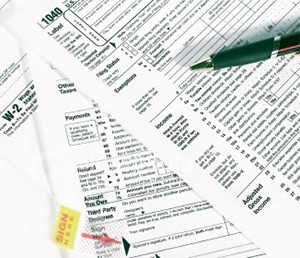
Closing out the third quarter is a good time to look ahead, because getting a jump on year-end activities saves a last minute crunch during the holidays. One of the relatively easy tasks a business can do is clean up the contractor list for 1099s. Take the following five steps, and check 1099 prep off the to-do list:
- Review the Form 1099 vendor list and make sure each contractor that receives compensation in 2015 is marked in the accounting system as eligible for a 1099. (In QuickBooks, use the drop down menu to select 1099 recipients.)
- Ask for a Form W-9 from each contractor to confirm or update the address and federal EIN. This ensures current information with no delay in receiving the 1099 on time. If a couple of phone calls or emails go unanswered and you still don’t have a W-9, hold their next check, or two, or three. Sooner or later they’ll be calling you and gladly trade a W-9 for the check(s). This is also a great time of year to make necessary changes or play catch up on withholding taxes, if applicable.
- Ask contractors for a worker’s compensation certificate. Without independent workers comp certificates, the contractor may need to be included on the company’s payroll list for the dreaded worker’s compensation audit. The above tip about withholding checks also works with proof of insurance.
- Break out payment type before inputting 1099 amounts. Contractors paid with a check will require 1099s. Contractors paid via PayPal or credit card will not. If companies pay the same contractor both ways, then the amounts must be recorded as such so that only the check amount is reported on the 1099. The bulk of this work can be done in advance of year-end.
- Consider re-evaluating each contractor with regard to the employee versus contractor tests from the IRS. Accidentally misclassifying a contractor who the IRS defines as an employee makes the company responsible for social security, withholding, and other payroll taxes, which can add significant expense to a small business. The IRS has a quick guide to determining the difference between contract workers and employees.
Contract employment is a “red flag” area for the IRS; they actively look for wrongdoing. However, they also have a Voluntary Classification Settlement Program for companies who misclassify workers and want to rectify the situation.
One tip- if you are paying a person directly, in their own name and under their Social Security number, they are an employee. Don’t waste your time trying to fight this- you’ll lose. Make sure payments to “solo-preneurs” are written to a company and reported under an Employer Identification Number so at least a lawyer can make a good faith argument that a reasonable person may have assumed the contractor was a business and had other customers.
Following these five steps will give you a running start on year-end. If you have additional questions about Form 1099 compliance, talk with us or with your tax professional.


